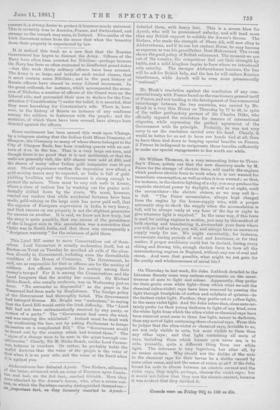On Thursday in last week, Sir John Lubbock detailed to
the Linnsean Society some very curious experiments on the sensi- tiveness of ants to light and colour. Apparently, they prefer for their grubs even white light—from which what we call the chemical (ultra-violet) rays have been removed by passing the light through bisulphide of carbon and sulphate of quinine—to the darkest violet light. Further, they prefer red or yellow light, to the same violet light. And Sir John infers that, since ante cer- tainly prefer for their young darkness to light of any kind, even the white light from which the ultra-violet or chemical rays have been removed must seem to them less light, nearer to darkness, than any sort of light containing these chemical rays. From this he judges that the ultra-violet or chemical rays, invisible to us, are not only visible to ants, but more visible to them than any other rays ; and that light containing all sorts of rays, including those which human eyes never see, is to ants, probably, quite a different thing from our white light. The inference is very ingenious, but after all, by no means certain. Why should not the dislike of the ants to the chemical rays for their larvae be a dislike caused 'by some other sense, and not the sense of vision at all P If Sir John forced his ants to choose between an electric current and the violet rays, they might, perhaps, choose the violet rays ; but it would not follow that they saw the electric current, because it was evident that they disliked it.




























 Previous page
Previous page